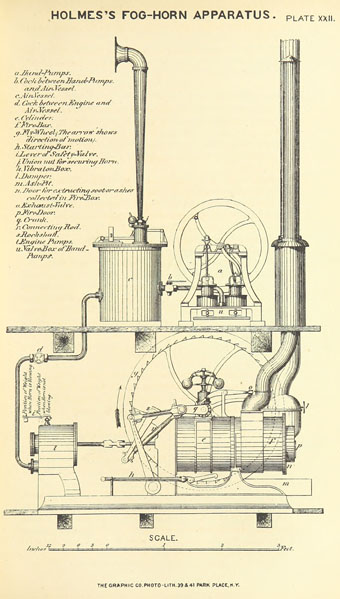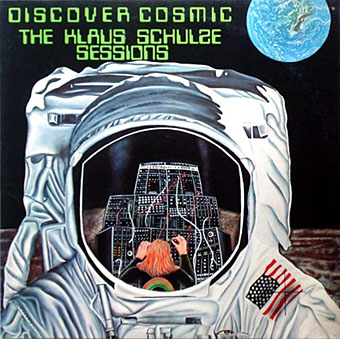Holmes’s fog-horn apparatus, 1875.
• “Have scientists designed the perfect chocolate?” According to Betteridge, the answer would have to be “no”, even more so when the scientists only seem to have reinvented the Flake which Cadbury have been making since 1920. But the story does tell you something about “edible metamaterials” and even “edible holograms”.
• “In The Foghorn’s Lament, I talk about someone called The Fogmaster, who apparently used to do guerrilla foghorn performances…his ringtones are still available.” Jennifer Lucy Allan on foghorns past and present.
• “The story of Les Rallizes Dénudés is almost that of fan fiction. Fans know some basic details and the rest is conjecture and imagination.” Patrick St. Michel explores the occluded history of the Japanese rock band.
The Wharton completist may recognize some of the raw material for these stories in her earlier works. For instance, she used the Greek myth of Demeter and Persephone in a 1912 verse play before finding its subtle final expression in “Pomegranate Seed,” in which the ghostly letters keep the New York lawyer figuratively tethered to the underworld. And a 1926 volume of poems contained an experimental riff on a dead woman returning home on All Souls’ Day, published over a decade before Wharton revisited the holiday in her final short story. The ghost story form transforms both these familiar materials and her evergreen themes: Once some donnée becomes a ghost story, what may have been just an amusing character study acquires a participatory element, since readers must meet her halfway in becoming scared. To do so involves truly contemplating what exactly it is in these texts—and it is never the literal ghosts—that elicits a chill.
Krithika Varagur on Edith Wharton’s ghosts
• Gaspar Noé’s favourite films. Elsewhere, Noé and Dario Argento talk about Noé’s latest feature, Vortex, while later this month Arrow are giving Enter the Void an overdue UK blu-ray release.
• Gay utopia: recent photographic portraits by Matthew Leifheit of Fire Island.
• Yogaville, 1993: more historic film of Alice Coltrane performing.
• At Dennis Cooper’s: The Maysles Brothers Day.
• Sugar Chocolate Machine (1967) by The Beatstalkers | Chocolate Machine (1993) by Sandoz | Chocolate Jesus (1999) by Tom Waits



